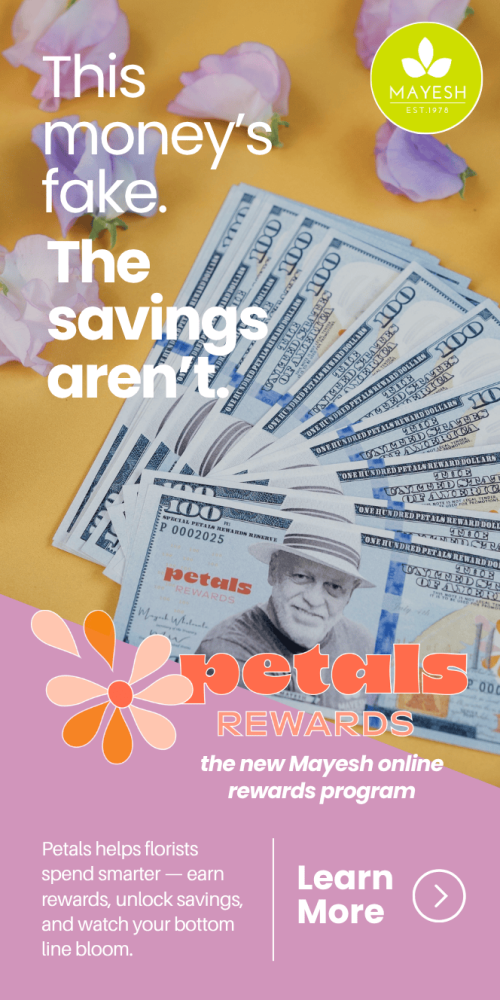
Small Business Marketing 101
Small businesses guide to core concepts of small business marketing.
This guide will help you put a small business marketing strategy in place without breaking your budget. Steven Jaenke, founder and CEO of Digimark Australia, added that people are looking to solve a problem, be entertained or be distracted. If your product or service fulfills any of these needs, you will attract customers.
But your product and service can’t speak for themselves. They need a little help, and that’s where a marketing strategy comes in.
How to develop your small businesses marketing strategy
The first step to develop your small business marketing strategy is to think about your audience.
“You need marketing if you want to be found by your target audience,” DeMers said. “If your competitors are marketing but you aren’t, your competitors will get all the business instead of you.”
Your audience is out there, but they might not know about you if you aren’t putting your business out there.
“Without marketing, you’re reliant on hard selling,” Jaenke said. “You’re approaching people that aren’t ready, don’t know who you are and may not even know they have a problem. Marketing helps people discover the small business, identify the problem that they have and the solution that the business provides as being the solution for them, and don’t feel pressured but instead relieved.”
The following steps can help you develop a basic plan from which your larger marketing strategy will take shape. Here’s how to define your brand and begin engaging your audience.
1. Define your brand.
Your marketing strategy will, of course, be different from a business that has a different brand. Normally when you think of a brand, you think of the company name, like Apple or Sony. However, that isn’t all a brand means. So, how do you figure out your brand?
“Developing a brand is a comprehensive first step in any marketing strategy,” Jaenke said. “You need to first identify why you are in business. If people can’t identify with you and why you are doing what you do, you don’t have a brand. Construct a brand story, demonstrating how you came to be in business and why it started. Tone, typography and logo are also important for [defining] a brand, but not as important as the brand story. It’s the glue that holds everything together.”
2. Create brand awareness.
Once you’ve defined your brand, the next step is making sure people know about it. Every person who is aware of your brand is a potential customer.
“Content is one of the best ways to increase brand awareness,” Jaenke said. “Video, written and auditory content helps highlight the business as an expert in the industry and provides value without the customer feeling they are being pitched.”
Alison Ver Halen, owner of AV Writing Services, said content is definitely important, but it’s also critical that you deliver it to the right people – your target audience.
“Content marketing, social media marketing and networking are all important, but beware that there are a lot of options out there for those three things, so don’t skip the first step where you identify your target audience and where they hang out so you can be sure your marketing efforts are getting you in front of the right people.”
3. Conduct market research.
If you’re having trouble figuring out who your audience is, the first step is doing some market research.
“Market research helps you identify whether you have a viable product or service, how saturated the market is, any gaps that you can fill, and … the appropriate price point,” Jaenke said. “To do this, you should apply social listening on Facebook and especially Twitter. Join groups and find out what problems people are facing. Look on forums like Quora and Reddit, and record the questions that are being asked. Put all of these together and look for commonalities. These common questions are their pain points.”
DeMers said he uses a tool called Ubersuggest to research competitors and identify their strengths, weaknesses and opportunities.
4. Put together a buyer persona.
Another helpful tool for gaining an audience and pinpointing the various audiences you’re targeting is a buyer persona. It might seem silly at first, creating fake customers with fake lives and hobbies, but the more detail you go into, the better.
“Your market research should help guide this, but effectively what this means is identifying a fictional person that represents a segment of the market,” Jaenke said. “You want to make it as thorough as possible, including more than just demographic.”
“If you’ve started a business already, then you probably have some idea of who your target audience is already,” DeMers added. “But it’s always a good idea to create a customer persona – a description of the demographics of your ideal target customer. This could include the age, gender, marriage status, job, job title and annual income. Get specific so you can really identify the perfect match.”
Jaenke provided an example buyer persona based on his business:
“We have Jim the accountant. He’s a 45-year-old man who runs a mildly successful accounting firm. He employs three other accountants and a receptionist and has a revenue of $500,000. Jim enjoys watching golf and working on vintage cars in his spare time. He participates in car rallies on the weekends as much as he can. He’s grown his business to $500,000 through referrals and networking but hasn’t been able to move past this mark. He’s looking for a way he can increase this through marketing.”
5. Find your target audience.
You can’t run a successful business without customers, which is why experts and experienced business owners take figuring out your audience so seriously.
“Many small business owners struggle with finding a target audience,” Jaenke said. “This is because they feel that they are limiting their options by narrowing their focus. It’s important to remember that choosing a target audience doesn’t decrease your marketing, it only focuses your attention.” [Read related article: Everyone Is Not Your Customer: That’s OK]
But what happens if you haven’t opened yet and don’t have any customers? That’s a normal place to be in when starting a business.
“If you don’t have any clients yet, look at your top competitors: What kinds of customers are they targeting?” Ver Halen said. “Who follows them on social media? Take a handful of their social media followers, and see who else those people follow on social media and the things they post about so you can get a feel for their hobbies and interests and the things they have in common that make humans, and not just prospective customers.”
6. Create a website.
Even if you don’t plan to sell products online, it’s crucial to have a website. When a potential customer finds a new business (new to them, or new in general), they are going to cross-reference that business, looking for its social media and website. A business website is a great and easy way to convey legitimacy to your audience.
“I recommend small businesses build their website on WordPress,” DeMers said. “You can use a popular WordPress theme like Divi and then hire a webmaster through a site like Upwork to build and maintain the website.”
Jaenke takes a different approach. He said WordPress, or a similar platform, should be a last resort.
“Often people fall into the drag-and-drop trap,” Jaenke said. “The companies that provide these make it easy to use and the monthly is affordable, but the cost does add up, and the end result is often not unique or engaging. Instead, we recommend hiring a professional web designer that focuses on the customer’s experience on the website.”
However, he said paying for a Divi subscription on WordPress is a great option if custom web development is not in the budget.
“This will provide you with a page builder similar to a drag-and-drop company, but the code will be cleaner, the end result more unique, and after you’ve paid the yearly cost of hosting Divi, it’s free,” Jaenke said. “You will also own the website.”
7. Calculate a marketing budget.
You could do all your marketing in-house, but it might not be your best bet. Consider hiring a consultant or outsourcing your marketing efforts to a small business marketing agency.
“It’s probably best to hire a consultant, even if just for a one-time consultation, to figure out what a good budget would be to meet your goals,” DeMers said. “Budgets can vary widely based on your industry, competition, and product or service. So, talk to an expert specifically about your goals to get an idea of budget.”
In theory, you could spend as much or as little as you want on marketing, but Jaenke said that how much you spend does play a moderate role in a marketing strategy.
“Generally, we work [with] the idea that businesses should spend 5% of their revenue on marketing if they are bringing in $5 million or less, and 8% if they are bringing in more than $5 million,” he said. “If the small business only brings in $100,000 for the year, their marketing budget is only $5,000 for the year, or $416.67 per month. This really narrows down the focus on a few marketing areas, which may not be viable options at that price point. You definitely can’t outsource locally, and you can’t hire internally.”
8. Choose marketing channels.
Marketing channels are the various ways you reach your target audience. Email is one popular digital marketing channel, as is Facebook. Each platform you use to reach any segment of your audience is considered a different channel.
“Most business owners default to Facebook, and it is a good channel to focus on,” Jaenke said. “Most people still use it on a daily basis, it’s not likely to go anywhere, and [it’s] continually updating the options available to business owners.”
As for which one is best for your business, Jaenke said it’s best to identify where your customers spend their time, because you may find that they check in with family and friends on Facebook but look for answers on Reddit. They might check their emails once a week but check Instagram every hour.
9. Start blogging.
Once you’ve determined your audience and you have a website and marketing channels, the next step is engagement. You want to interact with your customers and provide them with value before they even spend money. Your blog is an excellent tool in this respect. It allows you to teach them things and generate engagement that fosters a real relationship between you and your customers. As your online presence grows, you will find that your blog can be the backbone of your SEO and engagement efforts.
10. Set up your online tools.
If a blog is your first step in engagement, your online media tools are the rest of the journey. A Yelp page allows customers to provide direct feedback, and you can respond to them in kind. Your Google Business page has a similar power. Your social media tools will be even more effective as they allow continuous dialogue between you and the customers. If you have ever used Twitter to get a company’s attention, you understand just how valuable social media can be. Set up all of your online tools so you can drive engagement and develop your brand.
11. Start advertising.
There’s a reason advertising is one of the largest industries in the world. Ads can establish your initial contact with customers. From there, you can proceed with building customer relationships and everything else, but the ads get your name on people’s minds. This is how you open the floodgates, so make sure you’re ready.
12. Invest in outreach.
Advertising is a great way to generate outreach, but modern marketing provides plenty of additional methods to achieve your goals. You can pay for outreach through social media platforms or text message marketing services. If you have a Facebook Business page, Facebook will offer you paid options to promote your page to many more viewers.
13. Master SEO.
Search engine optimization is one of the best marketing methods out there. The idea is that when you create valuable engagement with your audience, your website will rise to the top of relevant Google searches. There is no outreach in the world that beats topping the Google search page. SEO is equal parts art and science. It will require investment of time and money, but when you get powerful organic results with SEO, they last. Moreover, the customers who come to you because of your SEO effort will be valuable customers who already hold strong trust for you.
Examples of marketing channels
Email is a vital part of digital marketing, as it allows you to communicate with those who have purposely signed up to receive communications from you, whether that’s a newsletter, discounts or general information. However, it’s easy for people to get scammed through email, so design your emails in a way that lets people know it’s actually your business sending them.
“The online world can be a wonderful, weird, uplifting, scary – and just about any other adjective you can think of – kind of place,” said Andy Wood, digital marketing expert and founder of Evil Marketers Club. “It really is a world in which you can find just about anything you can imagine, but unfortunately, this includes quite a few crooks, scammers and fraudsters. When you’re reaching out online, you need to convince your audience that you are who you say you are, you have what you say you have, and you can deliver what you say you can deliver.”
Jaenke said email converts better than other forms of marketing. “Often, you [already] have a warm connection, as you have their email address. We use a mix of traditional marketing and digital marketing to formulate a one-two-punch method.”
Social media
With so many social media platforms available, and more popping up every day, it’s important to know which ones will actually benefit your business.
“It’s essential to focus your efforts, and so you should only choose one, maybe two social media platforms to interact on,” Jaenke said. “If you choose more than this without someone to delegate tasks to, you’re spreading yourself too thin, and your message will be lost in the noise or appear inauthentic.”
On the other hand, Laurie Wilkins, founder of Call Outdoors, is a proponent of getting on as many social platforms as you can handle. She said a Facebook page, an Instagram page, a Twitter profile and a YouTube channel are all essential to increase your range of audience. Let’s look a bit deeper into each of these platforms.
A Facebook page is a great way to really talk with your customer base in real time. When you post something, it’s open for people to leave comments, raise concerns and start conversations. As the business owner, you’ll be able to jump right into those threads and converse with your customers on topics that are important to them. Share ideas, photos and updates about your business with the goal to create a more personal relationship with your audience.
If you use an Instagram page to market your business, it’s important to be consistent in your posting habits, think about the layout and look of your grid, and have photos at the ready so you aren’t scrambling for content. Being prepared will let your customers know that you care about the way you present your business and lead to a higher-quality Instagram page. This can all increase the number of people who want to follow you and engage with your content. Instagram also allows for influencer marketing, which can be a big benefit for the right type of industry.
YouTube
If you have the type of business where making videos is appropriate, YouTube is the way to go. Videos of activities like cleaning carpets, detailing cars and making soap have gone viral because they are satisfying to watch and the end result is worth sticking around for. Look into channels of other businesses in your industry to gauge how well they’re doing on the platform and help you decide if it’s worth pursuing.
Twitter for business is interesting because, unlike Instagram, its primary focus isn’t photos, and unlike Facebook, the goal isn’t always to start conversations. But many businesses have had success on Twitter with their witty comebacks to customers as well as competitors; think fast food chains ribbing on each other about the quality of their respective burgers. Twitter is a little more casual than Facebook and lends itself well to quick notes about your business. You can include a link to your website or another resource in these notes.
Pay-per-click (PPC)
PPC is a method of marketing that allows you to place targeted ads on pages that your customer base is likely to visit. A click on that ad will redirect the customer to your website, and all you have to pay is a small fee per click. If you are trying to branch out into a new target audience or just gain a larger customer base, this could be a great channel to explore. It’s essentially the opposite of organic traffic, but with the amount of use search engines get, it has the potential to increase your business substantially.
Online networking
As you develop your brand and become recognizable, other companies and personalities will want to work with you on campaigns and marketing efforts. For small businesses, guest blogging, partnered YouTube videos, and similar collaborations are a popular way to mutually boost outreach and help each other grow. Every time you collaborate with another online presence, you get valuable links that point back to you and boost your online authority. Networking is one of the most cost- and time-efficient marketing channels. That said, it does not work alone. It performs much better when paired with other channels, especially the last one on this list.
Website
You might be wondering why we saved this one for last, when it seems like the most obvious. The reason is that some businesses really underutilize their websites. A website is usually the first thing a business owner creates for marketing and the first thing customers will see of the brand. But all too often, a website isn’t optimized to bring in traffic and reach new customers. Pay attention to your search engine optimization (SEO), including keywords and product descriptions, to help your website rank higher in search results.
Examples of marketing strategies
Social media platforms aren’t the only marketing channels available to new and small businesses. There are other marketing options; you just have to figure out the best ones for your business.
“I recommend starting with a content marketing strategy,” DeMers said. “That means creating and publishing great content that provides value to people in your target audience. Think about who your ideal customers are, what questions they have and what problems they need solved. Publish content that answers those questions and solves their problems, and they’ll love you for it. Eventually, they’ll even become customers.”
Influencer marketing is another strategy that has been around for years. Ver Halen said influencer marketing can absolutely work, but it isn’t right for every brand.
“B2C industries, especially ones that focus on providing products rather than services, tend to get the most out of influencer marketing,” she said. “I don’t recommend it for service-based industries or B2B industries, and the data shows that even for B2C industries, influencer marketing appears to be on the way out.”
These marketing strategies would be nothing without the channels and platforms on which they live, so let’s take a closer look at the channels best used for your marketing strategy.
Marketing is a specialized field that many established businesses have a whole department for, but that’s not a luxury small businesses always have. Use the tips in this marketing guide for small businesses to start heading in the right direction.
Related Articles
Related
That Flower Feeling Appoints Debora Steier to Development Committee
Carlsbad, CA – That Flower Feeling has appointed Debora Steier to its Development Committee. The organization leads the national movement to inspire Americans to enjoy flowers daily, most notably through its newly released "Just Add Flowers" direct to consumer...
20 Years at Alexandra Farms: From Humble Roots to a World in Full Bloom
By Alexandra Farms Alexandra Farms started as an experiment: to grow cut flowers that combined the practicality of standard varieties - a long vase life and the ability to withstand global transportation - with the romance of traditional garden roses. What began as an...
Florabundance Featured on National TV
Carpinteria’s Florabundance Featured on National TV in World’s Greatest!... Carpinteria-based Florabundance, a cornerstone of the Central Coast’s floral industry, is proud to be featured in the national television series World’s Greatest!... (Season 24, Episode 398)....






















